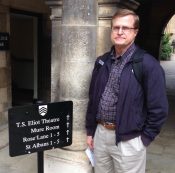By Glynn Young
The idea has been in my head for years – a story about my great-grandfather. But I knew only a few facts about him, passed down by my father. Research has filled it in – a little bit.
Too young to enlist as a regular soldier, he’d been a messenger boy in the Civil War. He’d lost two brothers and a brother-in-law in the war, leaving him the youngest and surviving son. When the war ended in 1865, he had been “someplace east,” likely North Carolina rather than Appomattox. He had to walk home to southern Mississippi. When he arrived, he discovered his family was gone, having fled to Texas.
That was as much as I knew. When I finally decided to consider a story about him, I turned first to the family Bible, with its records of births, deaths, and marriages. The records, written over a period of 50 years, were in the same hand – my great-grandfather’s. They proved more revealing that I’d realized. His father died in 1870, leaving my great-grandfather, then 24, the head of the family, responsible for a widowed sister and her children, two widowed sisters-in-law and their families, and his own young (and growing) family.
He and my great-grandmother had seven children surviving to adulthood; two died in infancy. She died in 1887. He was 40. He never remarried, at a time when women often died considerably younger than men and second marriages were common, especially at the relatively young age of 40. He died in 1920, and he was buried in a cemetery outside Alexandria, La., where he’d been living with a daughter and her family.
Those were the facts I had in hand. I started filling in what I didn’t know, which, even after months of reading and research, is still considerable.
One reading stopped me in my racks. A book published this year, Hearts Torn Asunder: Trauma in the Civil War’s Final Campaign in North Carolina by Ernest Dollar Jr. If you ever want to know what war can do to both victors and defeated, and the civilians in their way, this is well worth reading. A hard, difficult story, it describes the people living in north central North Carolina, the paroled soldiers from Robert E. Lee’s Army of Northern Virginia who were making their way home from Appomattox, those of the army commanded by Confederate General Joseph Johnston, and the victorious troops of General William Tecumseh Sherman. The three armies were converging on the region, and it was ugly.
As I read, I knew one thing: my great-grandfather experienced that. He was there. As a messenger boy, he would not have experienced the rigors and horror of combat. He would have seen it, of course, but he wouldn’t have been in the thick of it. But he was there for the final convulsion of the Civil War.
This is what historical research does for a story. It fills in the gaps around dates of births, deaths, and marriages. It provides context. It explains the high drama of what our ancestors lived through. And it tells a story just as thrilling as any we’re capable of inventing.
 Glynn Young is a national award-winning speechwriter, communications practitioner, and novelist. He’s the author of four published novels, Dancing Priest, A Light Shining, Dancing King, and Dancing Prophet; and Dancing Prince; and the non-fiction book Poetry at Work. Visit Glynn on Facebook, Twitter, LinkedIn, Pinterest, his blog, the Dancing Priest book page, and his business website.
Glynn Young is a national award-winning speechwriter, communications practitioner, and novelist. He’s the author of four published novels, Dancing Priest, A Light Shining, Dancing King, and Dancing Prophet; and Dancing Prince; and the non-fiction book Poetry at Work. Visit Glynn on Facebook, Twitter, LinkedIn, Pinterest, his blog, the Dancing Priest book page, and his business website.

Comments 1
Excellent post!